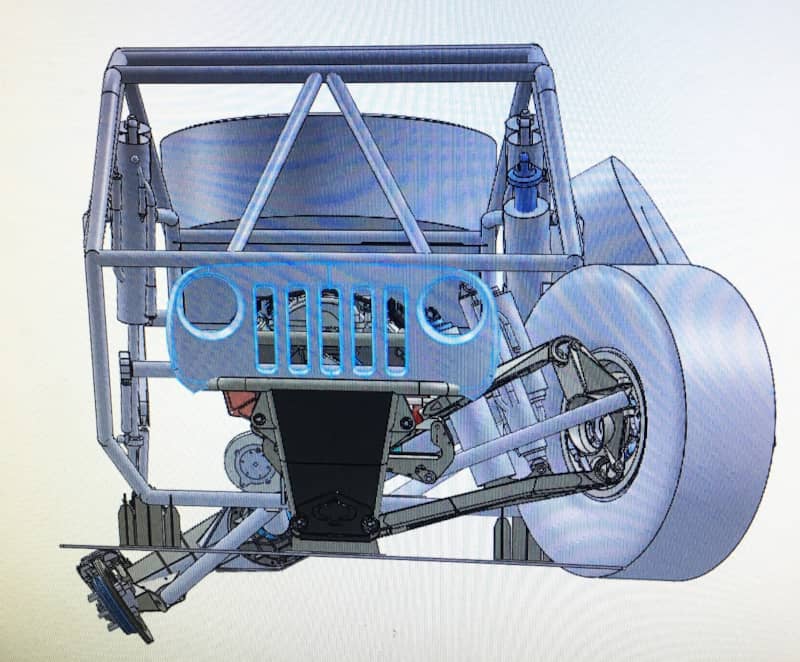5 Reasons Why Your Solid Axle Rig Is Obsolete
It’s a topic that has been debated for years, both around campfires and amongst engineers. The consensus seems to always be that each have their benefits and pitfalls in different types of terrain. But are we now finally reaching a point where the solid axle vs IFS (independent front suspension) argument scale tips in favor of one over the other? Or will off-roaders everywhere be perpetually locked in a stalemate when it comes to front suspension? We’ve outlined five points that explain why independent front suspension might be the way of the future for off-roaders.
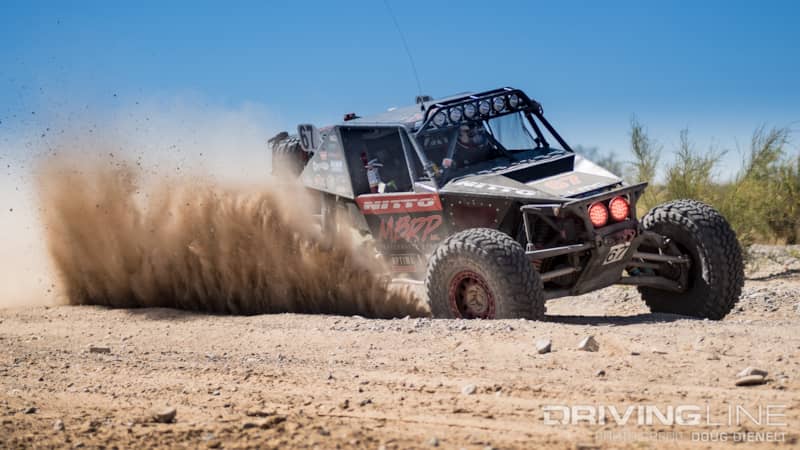
1. Wheel Travel
First and foremost, we can address something that historically seemed to always limit IFS rigs, and became a favorite arguing point for the solid axle crowd. Yes, we’re talking about wheel travel. Traditionally, IFS setups didn’t allow for much wheel travel, as the CV axle joints and rubber boots do not take well to extreme angles from the front differential. This was an inherent problem with most IFS vehicles looking to pull big travel numbers while retaining four-wheel-drive. But thanks to a boom in off-road suspension technology (partially due to the success of the Ultra4 series), aftermarket parts manufacturers and race-car companies such as Armada Engineering are now producing full IFS and IRS (independent rear suspension) Ultra4 vehicles boasting 24 inches of wheel travel front and rear—more than enough to conquer the rocks at King of the Hammers. And each year, as off-road innovation progresses, we see higher travel numbers becoming more accessible to the IFS crowd.
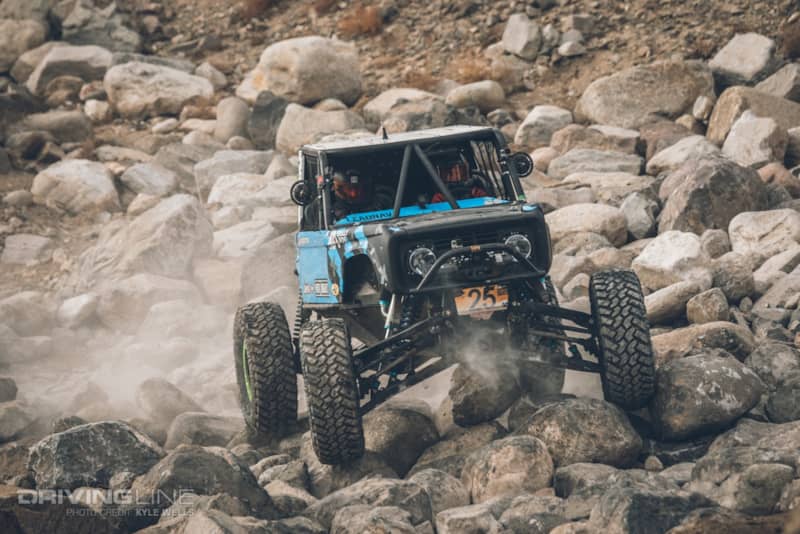
2. Protection of the Drivetrain and Steering Components
Conversely, one of the long-standing benefits of an IFS off-road rig is the protection of vital components of the drivetrain and steering. On a traditional solid-axle rig, the steering components are normally exposed and usually the first thing to take a hit from that rock you didn’t see right in front of you. Bent tie-rods are the norm for many ‘wheelers, and those who are running full hydraulic steering have to worry about protecting their steering ram from the rocks as well. IFS vehicles don’t have such nuances to worry about. The tie-rods and steering rams sit tucked up above the chassis, and move up independently of each other out of harm’s way. This increased ground clearance is especially valuable when navigating large boulders such as the trails you’ll find at The Hammers.
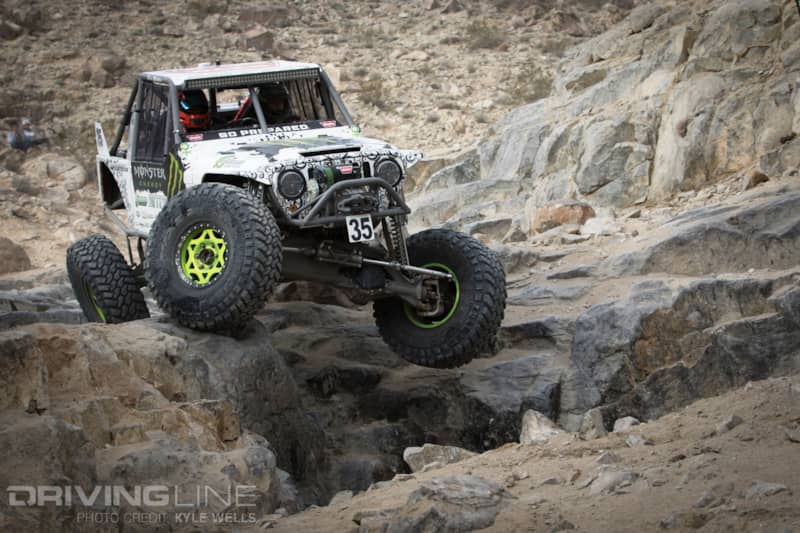
3. Fast Desert Driving
Especially true for race vehicles such as Ultra4s, fast desert driving can pose a challenge for solid-axle setups. At higher speeds over uneven terrain, vehicles with solid-axle front suspension setups tend to be less stable and more difficult to maneuver. IFS allows each wheel to take bumps and dips independently, keeping the chassis more stable and the steering easier to combat. But this phenomenon does not only affect race cars. Over the last few decades, most auto manufacturers have re-designed their four-wheel-drive trucks and SUVs to be easier to drive for the average consumer. One of the biggest shifts in engineering has been to ditch the solid-front-axle for an IFS setup with CV axle shafts. In fact, as of 2017, only two production SUVs in the United States are built with a solid-axle setup from the manufacturer, the Jeep Wrangler and the Mercedes Benz G-Class. With that being said, the G-Class is rumored to lose the solid-axle in lieu of an IFS system for 2018.
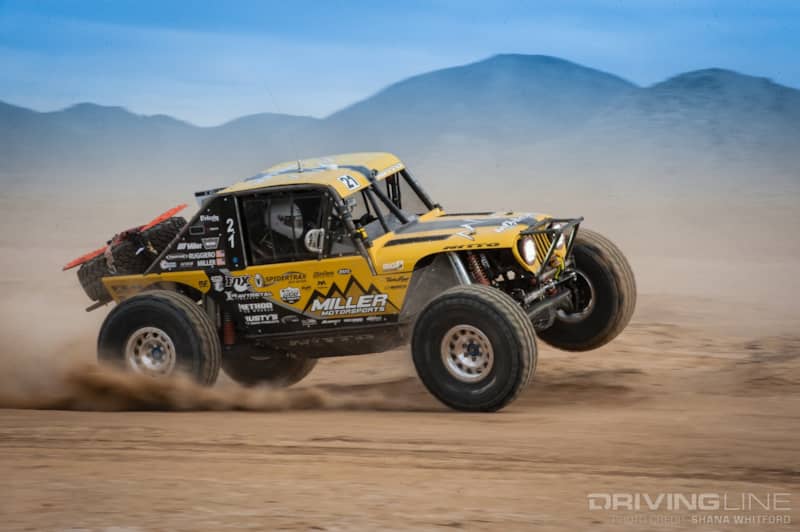
4. Weight
Another factor that most hobbyist off-roaders don’t take into account is the difference in unsprung weight between a solid-axle and IFS vehicle. Unsprung components consist of any part of a vehicle that is between the suspension and the ground. In this case, a solid front axle can weigh upwards of a few hundred pounds when loaded with a differential, axle shafts and links. An IFS setup weighs considerably less, due to the front differential being mounted to the chassis instead of on the axle itself. In addition, upper and lower control arms normally have a lower combined weight than a one-ton axle housing, which is a popular front end you’ll find on many rock crawlers.

5. Suspension
Having a lower unsprung weight makes tuning the suspension easier for both fast-desert driving and crawling in the rocks. Solid-axle rigs require aggressive compression valving in the shocks to combat the heavy forces taking the hits under the car. Shock rebound valving must also be slower to control the speed at which the heavier suspension unloads. IFS vehicles can be tuned with lighter compression and rebound valving, allowing them to be nimble and versatile in fast desert driving. While IFS vehicles traditionally do not articulate as easily as a solid-axle rig in the big rocks, chassis engineering and suspension technology is trending in a way to improve articulation in IFS rigs.
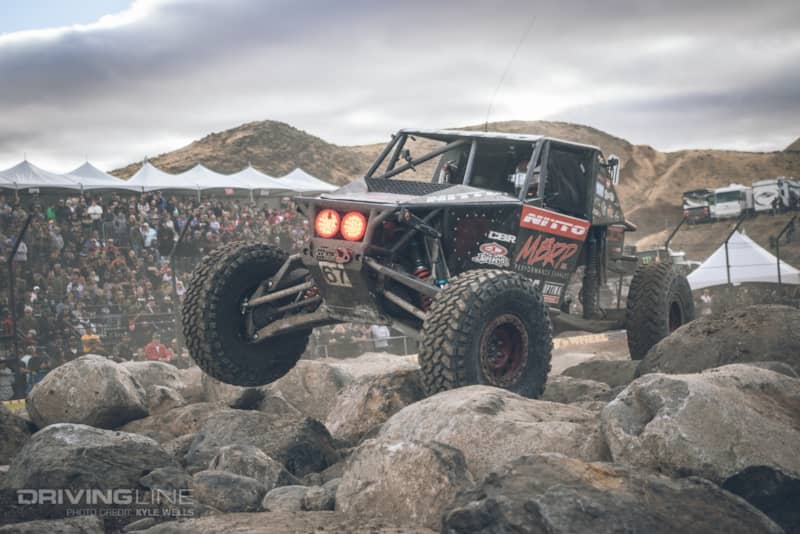
Is IFS four-wheel-drive the way of the future for off-roaders? Given the advancements that aftermarket manufacturers have made in the wake of the influx of off-road enthusiasts now sporting IFS-equipped 4x4s, the trend is definitely on the rise. And the racing world is taking notice as well. Many Ultra4 drivers who have exclusively ran solid axle vehicles for years are now making the switch to IFS race cars, as the iconic race courses they compete in now demand a much more versatile vehicle than a simple rock crawler. Longer wide-open desert sections and short courses with bigger jumps are becoming the norm, and the sport of Ultra4 racing is adapting as a result. The answer to the age-old question may not be the same for everyone, but one thing is clear—IFS vehicles are leaving their mark on stages that once belonged exclusively to the solid-axle crowd.
